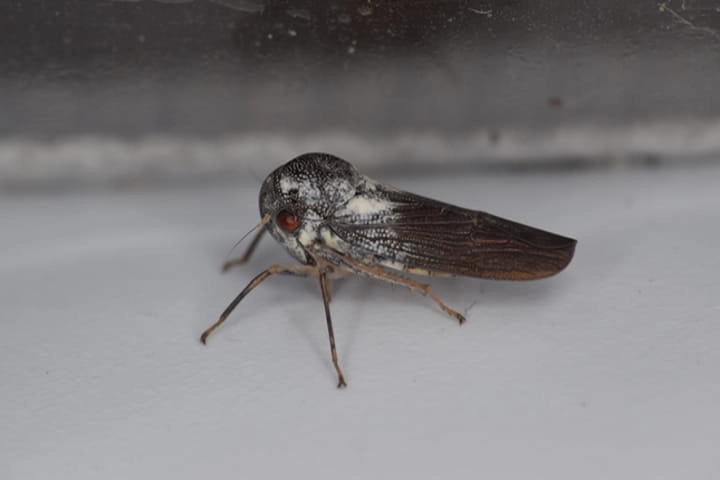The world of entomology was in for good news recently as a new species of leafhopper insect was found in Uganda’s western part. This insect which has red eyes, metallic looks is the first sighting from this group of creatures after 1969, is rare and looks quite similar to the Mothman as per a report in gizmodo.com.
Even though the leafhoppers insects are common and are recognised as pests who eat crops, the phlogis, the one that was found is remarkable as it is rare. The last confirmed sighting was half a century ago in the Central African Republic.
The study and its details were published by the peer-reviewed scientific mega journal Zootaxa.
The study’s lead author Alvin Helden, talking about this insect in a university release noted: “Leafhoppers of this genus, and the wider tribe, are very unusual in appearance, and are rarely found. In fact, they are so incredibly rare that their biology remains almost completely unknown, and we know almost nothing about Phlogis kibalensis, the new species.”
Helden is an entomologist at Anglia Ruskin University in the United Kingdom.
The newly found insect Phlogis kibalensis was named after Kibale National Park as this is where Helden and his team of student entomologists found this creature.
Description of the physical attributes of the insect stated that it was a quarter-inch long; had six spindly legs; and silver body which is reflective while the wings are reddish-brown. While the eyes are bright red, like other male leafhoppers, its genitalia was leaf-shaped.
Also read: New butterfly species, Chocolate-bordered Flitter, discovered in Sikkim
No much is known about this newly discovered insect. Helden disclosed that one still does not know what P. kibalensis eats or its ecological niche. Being closely related to cicadas, this newly found Leafhopper like a majority of them feeds on plant sap. In turn they become a meal for birds and other invertebrates like beetles, spiders, and wasps, which Helden has been studying since 2015 in the Ugandan wildlife park.
Stressing on the importance of finding new species, Helden said: “Outside national parks and reserves, the amount of rainforest that has been cleared in the tropics is devastating. Rare species could be living anywhere, but deforestation means it is inevitable that we will be losing species before we have discovered them.”
The wildlife parks and forests in Africa are teeming with fauna which include both big and small about whom either nothing or very little is known to the scientists. For example, last year, a Walker’s duiker, which is a species of antelope which had never been captured on film in the wild, was shot on a trail cameras in Togo.
In case of beings like the P. kibalensis which are small, trail cameras cannot spot them. Thus it makes physical documentation and study of these creatures important for research.
Also read: Vulture bees of Costa Rica feast on meat




















